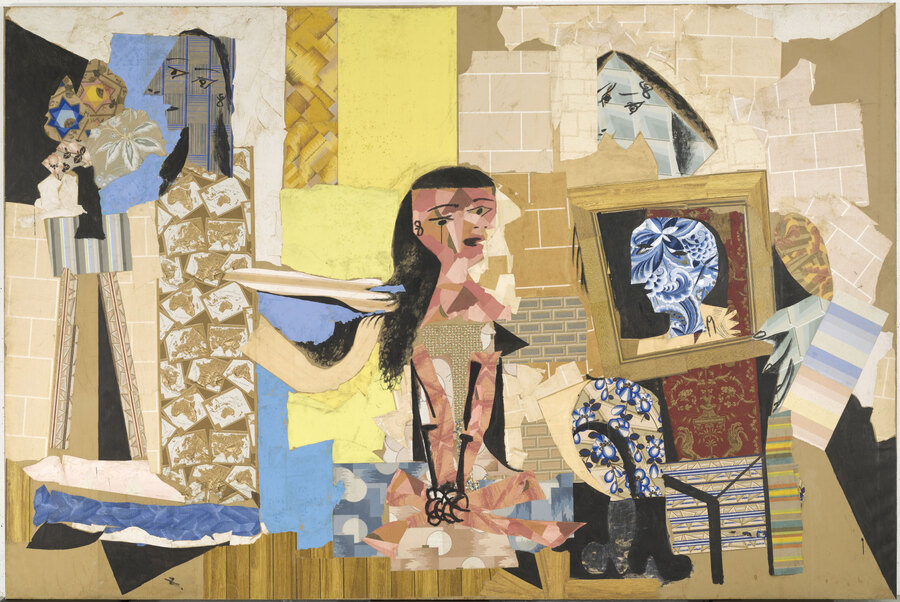
Tags for: Picasso and Paper
- Magazine Article
- Exhibitions
Picasso and Paper
The landmark exhibition finally approaches
Britany Salsbury, Curator of Prints and Drawings
August 28, 2024
Appears in Cleveland Art, 2024, Issue 3

After a four-year delay, the landmark exhibition Picasso and Paper comes to the CMA this December. Approximately 300 works by the iconic Spanish artist are brought together to highlight his lifelong engagement and experimentation with paper. The show, a collaboration with London’s Royal Academy, was on view there briefly in 2020 before museums worldwide were shuttered due to the COVID-19 pandemic. In the interim, the CMA has continued to work with the Musée National Picasso in Paris to finally bring this highly anticipated project to Cleveland.
Focusing specifically on paper, the upcoming exhibition promises to offer something new to those familiar with or just learning about Pablo Picasso. Born in Málaga, Spain, the artist spent most of his life in France. He holds a central place in art history for his invention of Cubism, a movement that shifted the focus in art making away from realistic representation of the external world and opened the door to abstraction. These developments are traced throughout the galleries of the exhibition, which offer a chronological survey of Picasso’s career. What this overview reveals is that although his name might bring to mind painted canvases, Picasso undertook his most daring artistic experiments using paper. Not satisfied to simply use the material to make straightforward drawings or prints, Picasso employed it for artworks ranging from paper sculptures that reconsidered the subjects of his canvases to massive collages that combined recycled, nontraditional materials. As Picasso and Paper demonstrates, paper was at the very core of the artist’s practice and identity.
Image

Most of the works in the exhibition are drawn from the collection of the Musée National Picasso. The institution holds the largest extant collection of work by the artist, who left his studio contents to the French state following his death. Rare and exceptional loans to the exhibition include Women at Their Toilette, which is on view in the United States for the first time in nearly half a century. Created in Picasso’s studio during the winter of 1937 to 1938, the massive collage—which extends more than 14 feet—shows Picasso at his most experimental. Using an unusual combination of papers, including scraps of wallpaper, and artificial wood, he translated the forms of three women into simple geometric shapes, which he combined on a larger support. Picasso’s friend Brassaï, a photographer, described him as “drawing directly with his scissors” to depict the forms of Russian ballerina Olga Khoklova, Picasso’s younger partner Marie-Thérèse Walter, and Surrealist photographer Dora Maar. Although Picasso envisioned that the composition would eventually be realized as a tapestry, it was difficult for him to part with it. He only allowed it to leave his studio after a nearly 30-year delay. With its massive scale and entirely new combination of materials, Women at Their Toilette is Picasso at his most creative and serves as a centerpiece to this important exhibition.
The collage is one among many highlights in the exhibition’s galleries, which begin with a study from ancient sculpture that Picasso made at just 13 years old. Purportedly his first word was piz (short for pencil in Spanish), and he drew prolifically throughout his entire life. La Vie, a cornerstone of the CMA’s collection, is presented with numerous sketches from Picasso’s early Blue Period (1901), allowing visitors to see how the artist thought through and continued to meditate on its composition. Galleries focused on the artist’s Cubist experiments show him interpreting a single subject—the guitar—in myriad forms using paper, from collages to paintings and sculptures made of paper.
Later works reveal the tremendous influence that this innovation had on both the art world around Picasso and his own work, as he continued to rethink notions of representation and art’s own history, using paper as a constant. The new and innovative focus of this exhibition allows for numerous surprises and, ultimately, encourages us to rethink the practice of a major figure in the history of art.